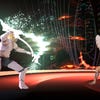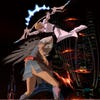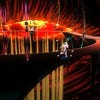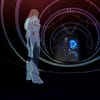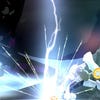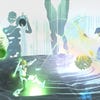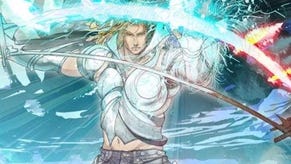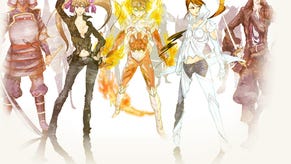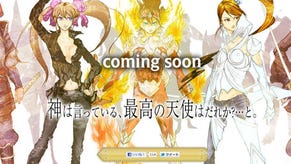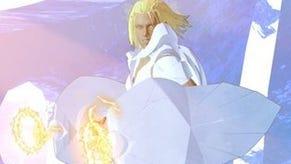El Shaddai: Ascension of the Metatron
Shaddai or shouldn't I?
Editor's note: This import review of the Japanese version of El Shaddai was originally published in June 2011. We present it again to mark the game's release in the UK and Europe today. There are no differences between the versions significant enough to affect our opinion of this great game. Be sure to check out our article on The Making of El Shaddai, too.
El Shaddai has everything you could ever want from a Japanese game. It has a transforming robot made out of motorbikes, a moonwalking dance master throwing shapes in front of the screen whilst you try desperately to fend off his minions, doves with boxing gloves for heads that gently but assertively butt you out of the air mid-jump, and so much more. Anybody who has ever spent time rummaging hopefully in the import section - it's out in Japan now, with a Western release planned for later this year - was hoping to find something like this.
And despite the fact that everybody's clothes come off as they take damage, there are absolutely no uncomfortably young-looking ladies in improbable outfits. Instead, there are topless blonde angel hunks and eerily naked humanoid blob-things. And giant, masked and armoured pigs. And monocular pyramid-headed Guardians that turn into giant bats. And and and.
El Shaddai: Ascension of the Metatron is the maddest and most beautiful thing I have played since... I don't even know. Probably Space Channel 5. It takes you on a breathtaking aesthetic journey that begins with strange, abstractly tribal landscapes and majestically solemn religious imagery before cartwheeling off in completely unexpected directions. The only thing that even remotely compares to it in terms of visual impact is Child of Eden. El Shaddai isn't perfect, but it doesn't have to be; it's unique, and that's much more important.
It's enormously gratifying that El Shaddai turns out to be so wonderfully varied, because at first it comes across as a bit limited and self-aware. Games with strong aesthetic statements do often take themselves a bit too seriously. The first chapter or two busy themselves with teaching you the basics of the combat system, introducing the three weapons that you can steal from stunned enemies and establishing a regular pattern of battle-rich 3D environments interspersed with stunningly beautiful 2D platforming interludes.
But about a third of the way through the game, it begins to reinvent itself dramatically with every new chapter. It gets better and better.
The combat itself is deceptively simple, with one button to attack, one to block and one to jump. It's all about timing. Button-mashing will get you the odd three-hit combo, but pausing just a half-second between button-presses changes the type of attack that you unleash, allowing you to chain balletic sequences of counter-attacks and dodges without getting hit. Once you get a feel for it, it's rhythmic and instinctive.
What gives the combat its kick is the ability to leap upon stunned enemies and steal their weapons for yourself, letting you switch quickly between battle styles. There are only three different weapons: the Arch, which looks vaguely like that curved thing that Klingons slice people up with; the Gale, which is a projectile weapon that sends explosive darts of light at foes; and the Veil, which essentially turns your hands into giant hammers.
They have something of a rock-paper-scissors relationship, and bosses have coloured haloes or other visual cues to indicate what they're weak to at any one moment. As the game progresses you gain Boost and Overboost powers, which let you regenerate armour and call upon heavenly spirits to strike with you.
El Shaddai's combat looks completely different when you're watching a skilled player, as opposed to someone who's just bashing their way through. El Shaddai really is all about the visual, and when you're playing it right, it rivals Bayonetta in fluidity and spectacle.
As for those 2D platforming interludes, they're mostly there to give El Shaddai's visual designers space for their overactive imaginations to spill over. Sometimes our hero, Enoch, and the platforms are just black silhouettes against a backdrop of exquisite stained glass; sometimes you're running across cresting waves; often the light sources change as platforms fall from the sky beneath your feet. There's no way to describe El Shaddai's visual style without sounding like an amateur poet, but the screenshots don't lie.



